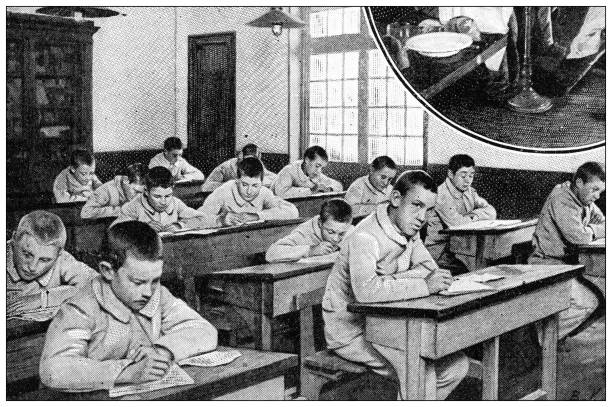What was education like during the Victorian era? We’ll look at schoolrooms, tiered floors, and typical lessons. We’ll also examine the idea of Grammar schools, which denied poor children the chance to attend. In addition, we’ll look at the role of the Church in education. In addition to providing basic education for children, the Church subsidized the cost of private schooling.
Typical lessons
Typical Victorian education lessons consisted of three R’s: reading, writing, and math. In addition to the three R’s, classes also focused on history, geography, and drill. The teachers were strict and expected students to do what they were told. Punishments included rapping knuckles with a ruler and clipping ears. The Victorian school system was not unlike the one we know today. Nonetheless, lessons were rigorous and emphasized academic performance.
The curriculum for Victorian schoolchildren was very different from the lessons we get today. Not all children attended formal education, but some attended church-run Sunday schools. Children who were rich had governesses and nannies to help them learn at home. As children got older, they attended public schools. Typical Victorian education lessons were aimed at the three Rs, but their content was far from revolutionary. While abacuses and calculators were used for arithmetic, they were not as effective as computers.
Schoolrooms with tiered floors
Tiered floors in Victorian schoolrooms were designed to allow teachers to see all of the students in a classroom, and it also ensured that the teacher and the class could supervise each other. Today, schoolrooms are designed to save space, but Victorian schoolrooms were much better for kids. Here are some of the reasons why. Tiered floors are more comfortable for children, make supervision more effective, and promote inclusion.
One reason this project was the winner was the fact that it connected the school to nature, including a large fireplace that nods to storytelling around a crackling fire. The school’s construction will be finished in November 2020 and will cost around $6 million. It will include twelve classrooms with breakout and withdrawal areas. The design of this schoolroom was praised by judges for its clever use of technology and heritage materials.
Grammar schools
The earliest grammar schools tended to be endowed civic foundations. While the more recent grammar schools took fees from students and advertised their services in newspapers, they saw themselves as part of the expanding market for education. In many cases, however, grammar schools failed to survive and were closed. Many of these grammar schools owed their existence to the Society for the Propagation of Christian Knowledge, which was founded in 1699 with the stated aim of spreading Christian knowledge.
In the late twelfth century, the concept of’mens sana in corpore sano’ grew in prominence. Grammar schools became the gateway to a liberal arts education and were closely associated with the ancient universities. Grammar schools in the Victorian era embraced this philosophy and began offering sports for children, as well as Latin and Greek. Unlike today, grammar schools were also equipped with gyms, which were used for various activities, such as athletics.
Poor children not allowed to go to school
The education system in Victorian Britain was based on the need of the working class. This meant that poor children often worked long hours to support their families. There was no national school system in place at this time, and poor children were not required to go to school. The rich were able to send their children to private school, while those from poor families could be taught at home by a governess. But the poor children often hung around the streets, and often ended up in jail for begging or causing trouble. This led to the creation of ‘Ragged’ Schools, which were free and taught children the basics. By 1893, the age of compulsory education was raised to twelve. However, some parents and employers continued to prevent their working children from going to school, and this pushed many of them to the streets.
The classrooms of the Victorian era were large and often had no decorations. Children had to sit in a corner for an hour or more in order to learn. Teachers were uneducated, and assumed that children with learning difficulties were lazy. They were also expected to work hard in school. In fact, school inspectors often came to the school to inspect the work of children. The punishment for failing an examination was to repeat a whole year of work.
Changing attitudes towards education
During the reign of Queen Victoria, attitudes towards children’s education drastically changed. Girls were often deprived of the opportunity to attend school. In contrast, male children were encouraged to attend school and were even required to attend, albeit at a lower rate. In spite of these attitudes, literacy rates increased significantly during the Victorian era, with women having historically high spikes in literacy rates. This change in attitudes was not only due to the rise in literacy rates, but also to a growing emphasis on gender equality.
Even though many children from working-class families attended school for a portion of their childhood, many others did not. Illiteracy was not a socially acceptable practice in Victorian Britain, and children living in rural or urban slums often did not attend school. However, many of these children eventually went on to go to university, and scholarship programs were offered to promising students. These scholarships were often awarded to the middle class, indicating that the middle class had a growing interest in higher education and the importance of literacy.

